Electro-L is back

The meteorological satellite “Electro-LN2” began to upload images in full resolution. Previously, pictures of the new satellite were published only in the viewing mode, but now the Earth can be studied with a detail of 1 km per pixel with an update of half an hour.
I talked a lot about the work of the “Electro-L” satellite, built in the NPO. S.A. Lavochkin. From a height of 36 thousand km, he shot the Earth every 30 minutes, creating magnificent large-format pictures of the eastern hemisphere. The pictures were in the public domain on the server of the Scientific Center for Earth Operational Monitoring (NTSOMZ) and anyone could study them.
Detailed images from the geostationary orbit, of course, can not be compared with googlokarty, but the images allowed to inspect the planet in dynamics. Any fairly large-scale event in the field of view of the satellite could be viewed from above, whether it was sand storms, typhoons, or fires at oil refineries.
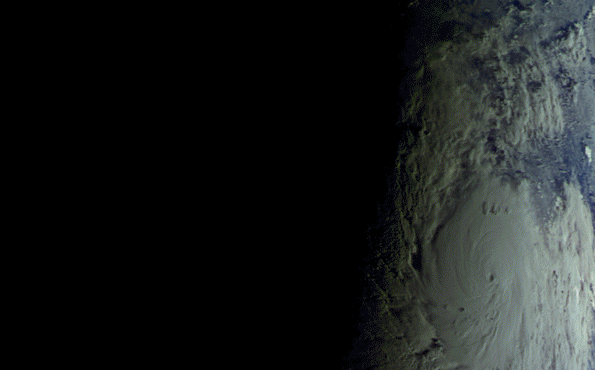
Due to the stationary, relative to the surface of the Earth, the position of the satellite for several years, it was possible to observe the entire hemisphere. For example, to create such a video that most clearly shows why the summer is longer than daylight and warm, and in winter is dark and cold.
For those interested in the work of the satellite, we opened the community of Electro-L Vkontakte . Other groups of enthusiasts opened the automatic Twitter satellite and developed the DeskChanger Electro-L application, which posted fresh satellite images to the desktop.
Light Production Company made an infographic of the project.
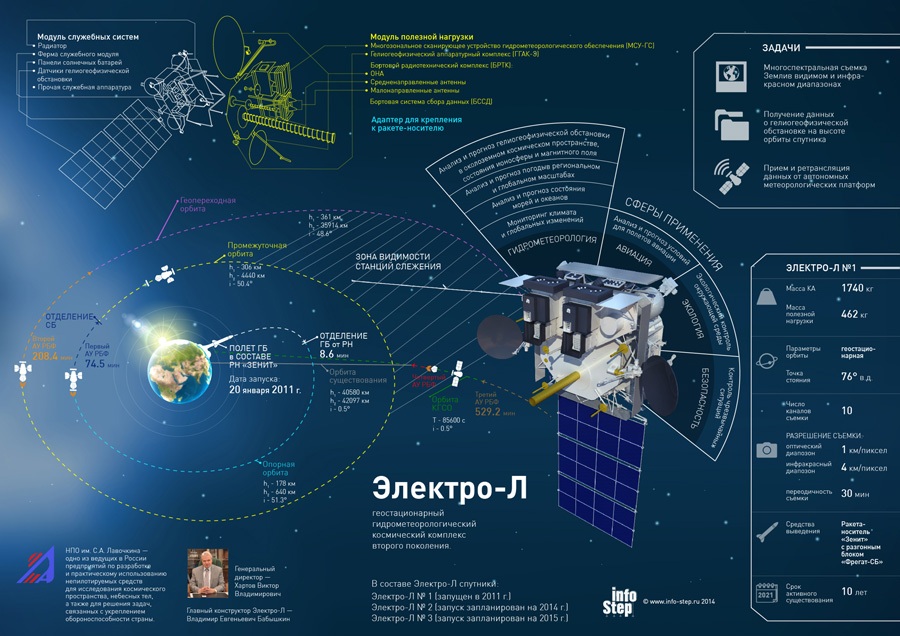
Large size .
And an interactive presentation:
Two years ago, “Electro-L” began technical problems with the orientation system, the pictures began to disperse, the quality fell. After six months, we partially managed to restore the working capacity, but the previous regularity of the shooting did not come out. Last year, Roscosmos launched a changer - “Electro-L№2”. Technically, the satellite is launched identical, only some flaws of the first have been fixed. The second must work longer and the quality is better.
The problem was that the second device did not post pictures. If with “Electro-L№1” all data lay on an open server, then only frames with a resolution of 1000x1000 pixels were laid out from the new server. This was still enough for Twitter and the desktop, but something more serious you can’t do with them.

Fortunately, Victor Hartov managed to report this problem to Roskosmos, the General Designer of Roscosmos for automatic space systems, during our open meeting “ Cosmos without Formulas ” at the Museum of Cosmonautics , and here — please, on the server again, archives of 160 megabytes are laid out again with full-length frames from all ten spectral ranges.
Every half hour there is a new picture of our planet. Taking this opportunity as an example, I made a weather animation over Central Russia on June 4, 2017.
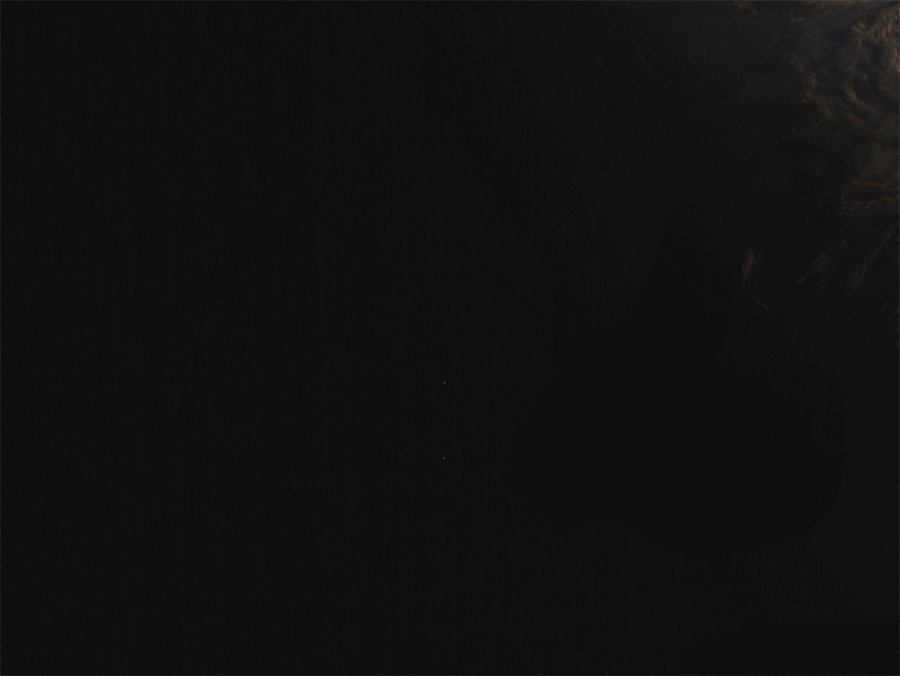 Download on the desktop.
Download on the desktop.
The brown color gamut is not a reason to lament the reduced forests and desertification of the planet, but the result of the camera capturing a satellite of light in the near infrared spectrum. The redness seen in the photo is the chlorophyll of living vegetation, which effectively reflects infrared light. To return the familiar greens, you have to shaman in Photoshop.
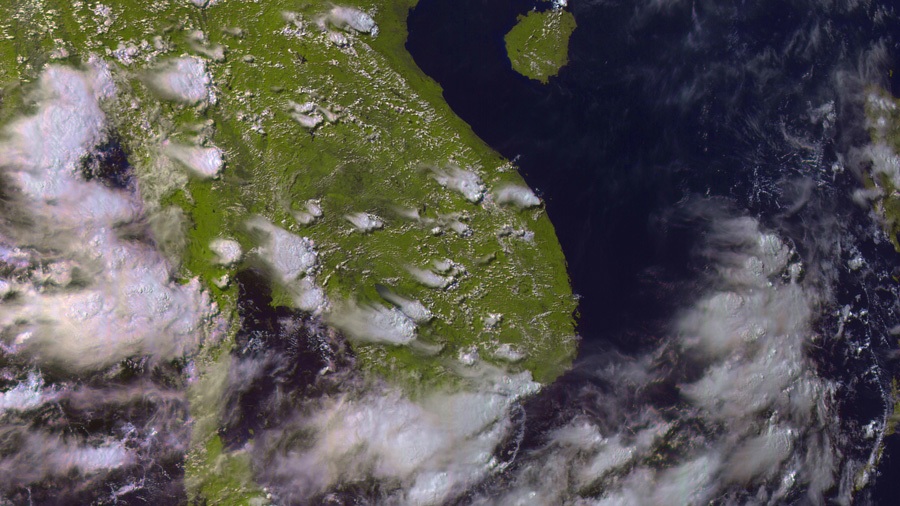 Download on the desktop .
Download on the desktop .
From open images, you can simply inspect half of the planet, or practice weather forecasts. Data from all ten spectral ranges of the satellite is open for viewing (albeit in JPG format).
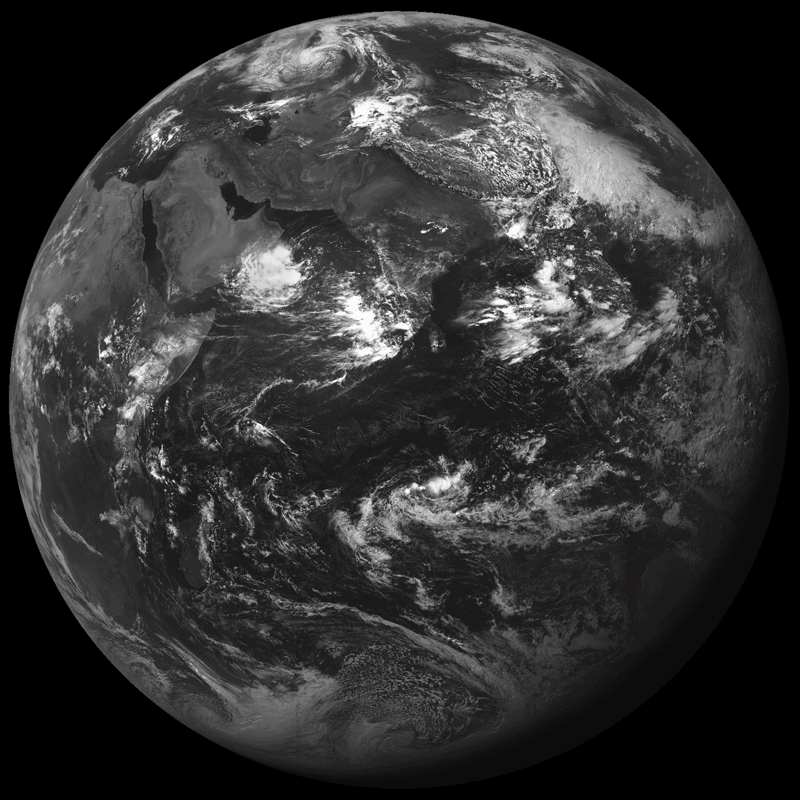
For the simplified work with pictures by the NTsOMZ staff, a separate “Electro-L” subsite has been created.
Everyone can think how to use this data, they are open for us, so it’s a sin not to use it. I, as before, will share, if something interesting will fall into our Earth orbital webcam.
All Articles